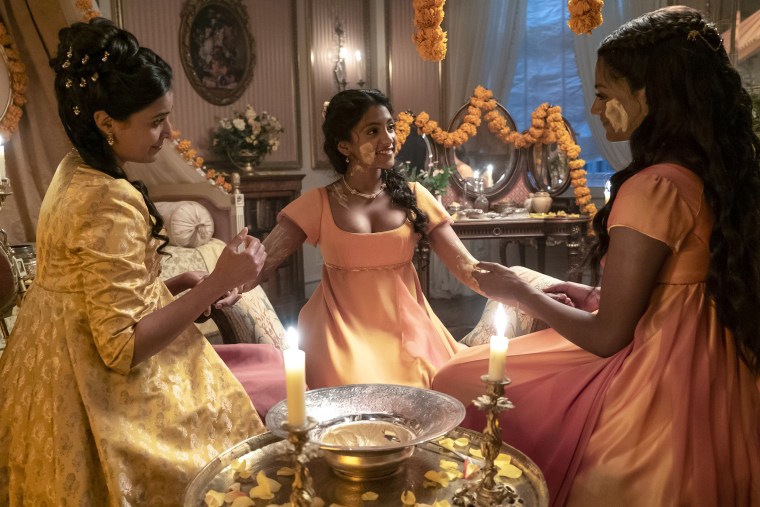In a quiet room, tucked away from the prying eyes and gossip of British high society, Kate Sharma massages oil into her little sister’s thick, black hair.
It’s a common practice among South Asians, one that conjures the smell of coconut oil and the feeling of a mother’s hands weaving through her daughter’s hair. These intimate, private moments are hardly ever seen in Western media, let alone in a series set in 1800s London.
It’s a scene shared by Kate and Edwina Sharma (Simone Ashley and Charithra Chandran, respectively), two Indian characters added to the cast of “Bridgerton” in its second season. The eight-episode run, which debuted on Netflix last month, has deviated from the formula used in its previous iteration, in which the story existed in an England that was blind to race.
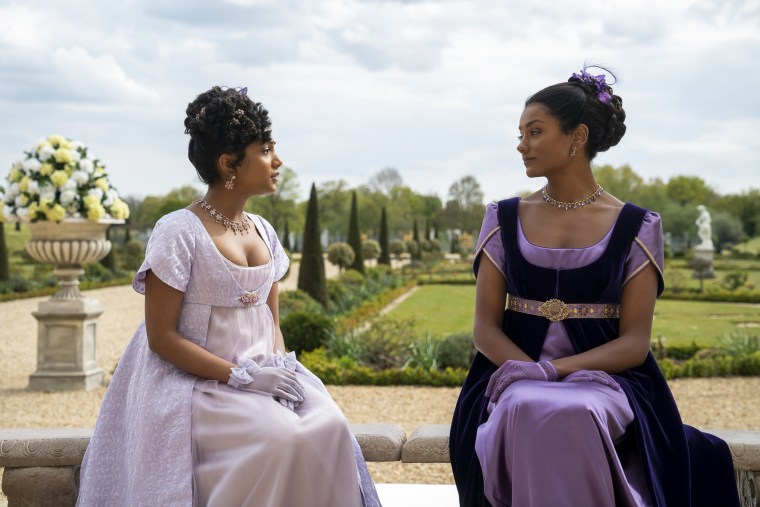
With the Sharmas’ plotline, however, there are several references to an Indian backstory, including a professed love of chai, accents that seem to slip back and forth between British and Indian, and even nods to British imperialism.
Harleen Singh, associate professor of women’s studies and South Asian history at Brandeis University, said the inclusion of brown-skinned actresses such as Ashley and Chandran was significant in itself, and some of the cultural moments hit home. But with an under-researched use of language and a half-in, half-out approach to addressing race, there were areas where the new season fell short.
Netflix did not immediately respond to a request for comment.
Mismatched languages and regions
When the Sharma sisters, along with their mother, Mary, first enter the story, they’ve just traveled to London from Bombay, India (known as Mumbai since 1995), and are seeking to get Edwina married into British high society. Kate, whose single-minded mission is to find her sister a husband, presents Edwina’s skills, including a mastery of two Indian languages: Hindustani and Marathi.
But there’s a clear issue with this, Singh said. Marathi, supposedly their mother tongue, is spoken in central and South India.
“They’re Sharmas,” she said. “They’re from North India.”
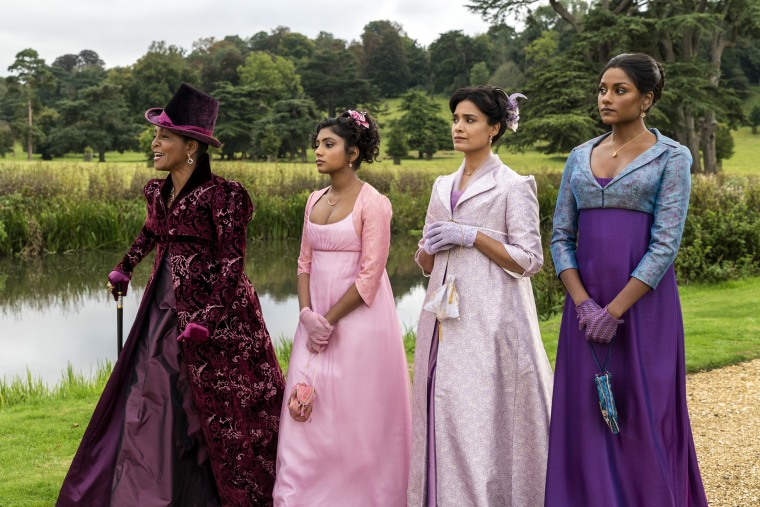
Throughout the season, Edwina calls Kate “didi,” a Hindi term meaning older sister, yet they both refer to their deceased dad as “appa,” a South Indian name for father. Moreover, Kate calls Edwina “bon,” a Bengali word for sister.
“I’m a little annoyed,” Singh said. “Do your research. ... If you’re going to cast Indian women, be specific. Are they from the North? Are they from the South? They say ‘appa,’ but then they say ‘didi.’ True representation actually lies in them making the effort to find out.”
A whitewashed approach to addressing colonialism
While the Sharmas strolled onto the London social scene in the idealized world of “Bridgerton,” real-life 1800s Britain was setting the stage for colonialism in South Asia.
The show doesn’t entirely shy away from addressing interactions between Brits and Indians on the subcontinent. Mary Sharma, played by Anglo Indian actress Shelley Conn, was notably rejected from English society after she married a poor Indian clerk.
But the show leaves out the violent and exploitative aspects of colonization.
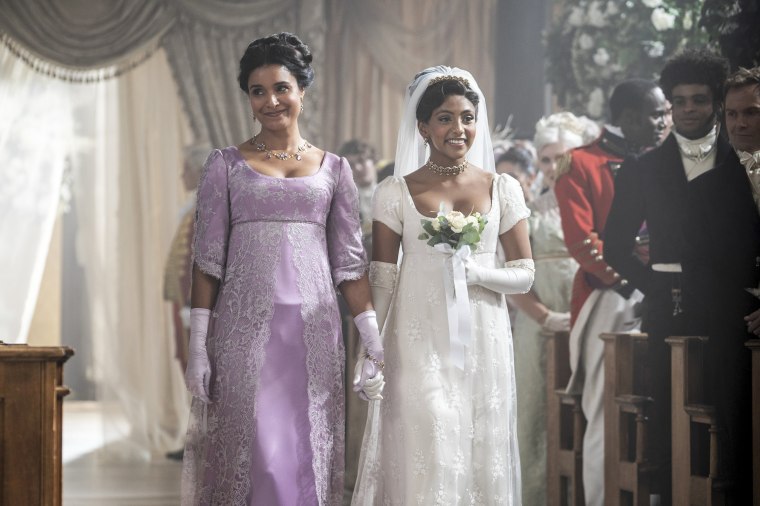
“I think it’s greatly flattened out,” Singh said. “During the Regency period that ‘Bridgerton’ is set in, the East India Company is in India. It’s a corporate colonialism at this point.”
While white characters in “Bridgerton” tell Kate about their desire to travel to India to “learn from” things like Ayurvedic medical practice, the reality was much different. The East India Company, a British enterprise formed to trade over the Indian Ocean, exercised military force over much of South Asia and planted the seeds for colonialism.
Though there were Indians in England at the time, they wouldn’t have navigated social circles like the Sharmas did at all, Singh said.
“These relationships existed, but Indians within high society in England — conversing, traversing, moving in the same way, being a part of society, being debutantes — I find that highly unrealistic,” she said. “They would have faced an upheaval of racist and cultural stereotypes. They would not have been so easily accepted.”
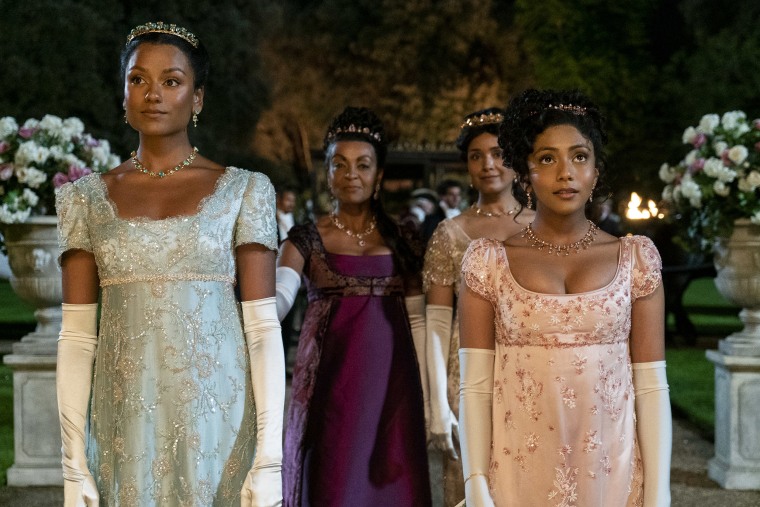
While other actors of color — such as Adjoa Andoh, a Black actress who portrays noblewoman Lady Danbury in “Bridgerton” — are dropped into roles historically occupied by white people without race as a factor, the Sharmas' Indianness is explored a lot.
Season two reminds viewers of their background in every episode, but Singh said it neglects diving deeper.
“Shows like this, they’re relying on a particular righteousness,” she said. “‘We’re doing the right thing, the right kind of representation.’ And if you’re going to do that, do the research.”
Cultural nods throughout the season
For Singh, the most touching moments in the second season of “Bridgerton” didn’t come from the dramatic love triangle between Anthony Bridgerton (Jonathan Bailey) and the Sharma sisters, but in the smaller glimpses into the lives of each character.
While some details were inaccurate, Singh said, there was comfort in seeing Kate and Edwina alone with their long, black braids cascading down their sides, sneaking cloves into English tea to make it more like chai or donning traditional jewelry.
“Just showing Indian women as the object of desire or conversation or love, we’ve done that 100 times before, and not always to good use,” she said. “But these things are intimate to our lives.”
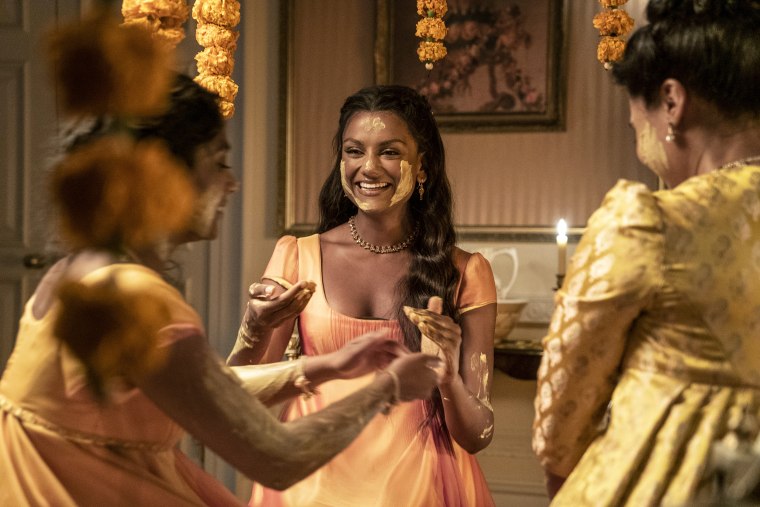
The most prominent moment came in episode six, with the three Indian women sitting together and participating in a traditional pre-wedding haldi ceremony. Mary and Kate apply a turmeric paste to Edwina’s face on the eve of her big day, a ritual that’s meant to bless the bride before her marriage.
Traditional orange garlands decorate their room, and they conduct the ceremony with little exposition or explanation. A rendition of the classic Bollywood song “Kabhi Khushi Kabhie Gham” plays in the background.
“I have faced a thousand tomorrows, but they’ve all been leading to this one,” Edwina says, and her sister spreads haldi on her arms.
Like many brown eldest daughters, Kate carries the family on her back, Singh said.
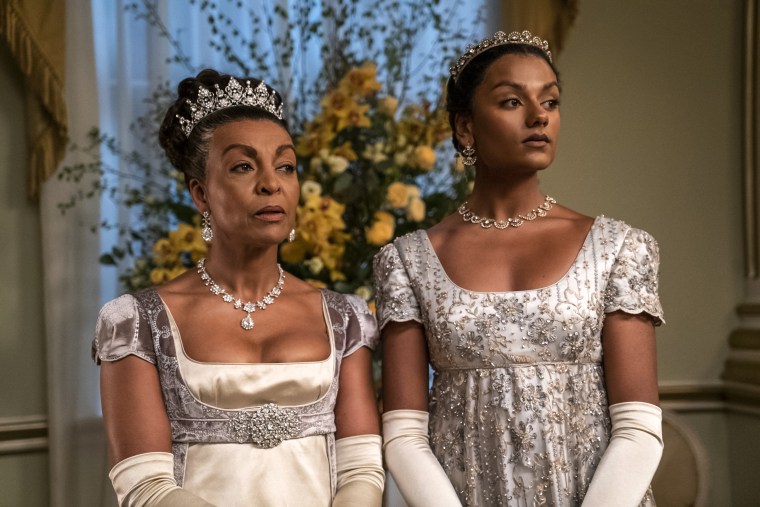
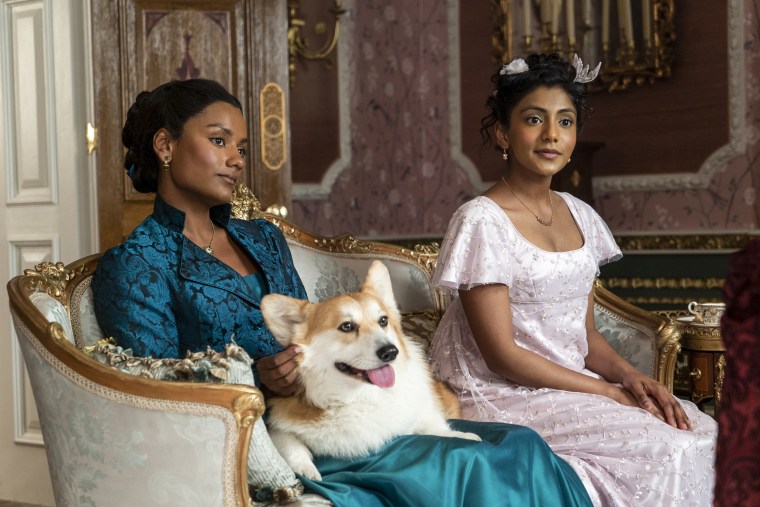
“The eldest does bear a kind of burden,” she said. “They have that caregiving, parental role. And that’s something we see in ‘Bridgerton.’ She’s kind of the architect of her sister’s future.”
Beyond the inaccuracies, Singh said she still sees the magic in “Bridgerton” season two. It’s a space that South Asian women seldom get to occupy and a familial relationship audiences rarely see.
“Those are the intimate parts of our lives,” she said. “I find these moments far more persuasive, far more moving. ... I hold out hope in the imagination of love stories.”
